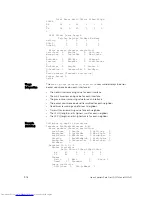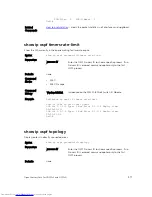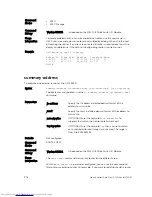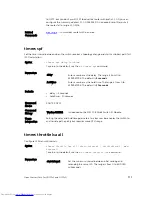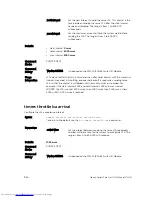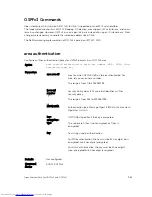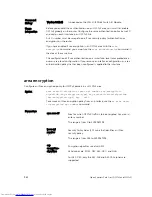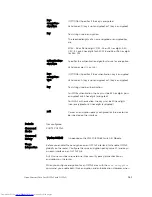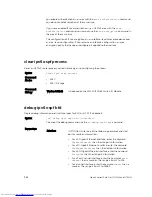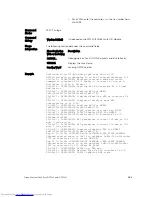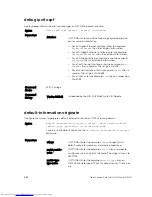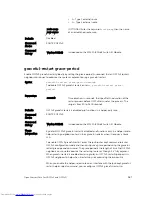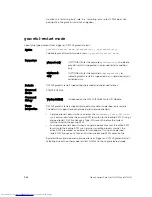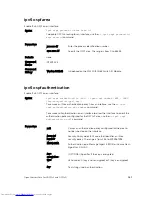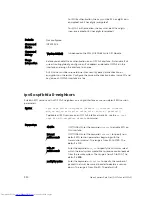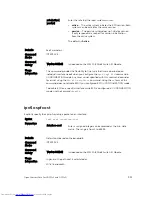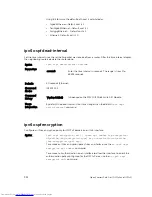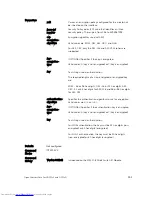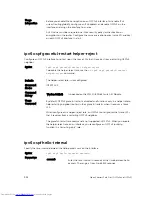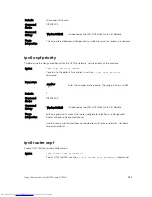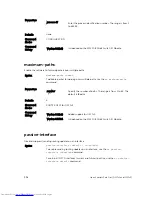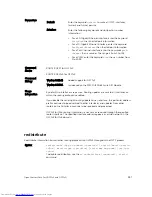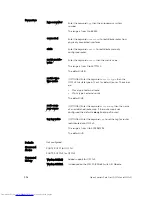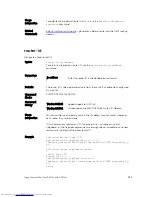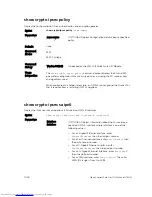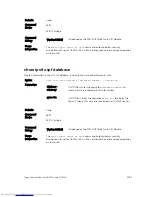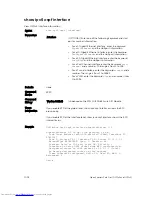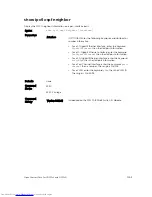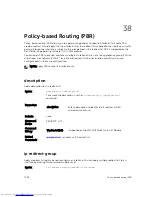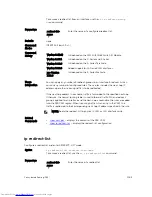
For MD5 authentication, the key must be 32 hex digits (non-
encrypted) or 64 hex digits (encrypted).
For SHA-1 authentication, the key must be 40 hex digits
(non-encrypted) or 80 hex digits (encrypted).
Defaults
Not configured.
Command
Modes
INTERFACE
Command
History
Version 9.2(0.0)
Introduced on the MXL 10/40GbE Switch IO Module.
Usage
Information
Before you enable IPsec authentication on an OSPFv3 interface, first enable IPv6
unicast routing globally, configure an IPv6 address and enable OSPFv3 on the
interface, and assign the interface to an area.
An SPI value must be unique to one IPsec security policy (authentication or
encryption) on the router. Configure the same authentication policy (same SPI and
key) on each OSPFv3 interface in a link.
ipv6 ospf bfd all-neighbors
Establish BFD sessions with all OSPFv3 neighbors on a single interface or use non-default BFD session
parameters.
Syntax
ipv6 ospf bfd all-neighbors [disable | [interval
interval
min_rx
min_rx
multiplier
value
role {active | passive}]]
To disable all BFD sessions on an OSPFv3 interface implicitly, use the
no ipv6
ospf bfd all-neighbors disable
command.
Parameters
disable
(OPTIONAL) Enter the keyword
disable
to disable BFD on
this interface.
interval
milliseconds
(OPTIONAL) Enter the keyword
interval
to specify non-
default BFD session parameters beginning with the
transmission interval. The range is from 50 to 1000. The
default is 100.
min_rx
milliseconds
Enter the keywords
min_rx
to specify the minimum rate at
which the local system would like to receive control packets
from the remote system. The range is from 50 to 100. The
default is
100
.
multiplier
value
Enter the keyword
multiplier
to specify the number of
packets that must be missed in order to declare a session
down. The range is from 3 to 50. The default is
3
.
990
Open Shortest Path First (OSPFv2 and OSPFv3)

